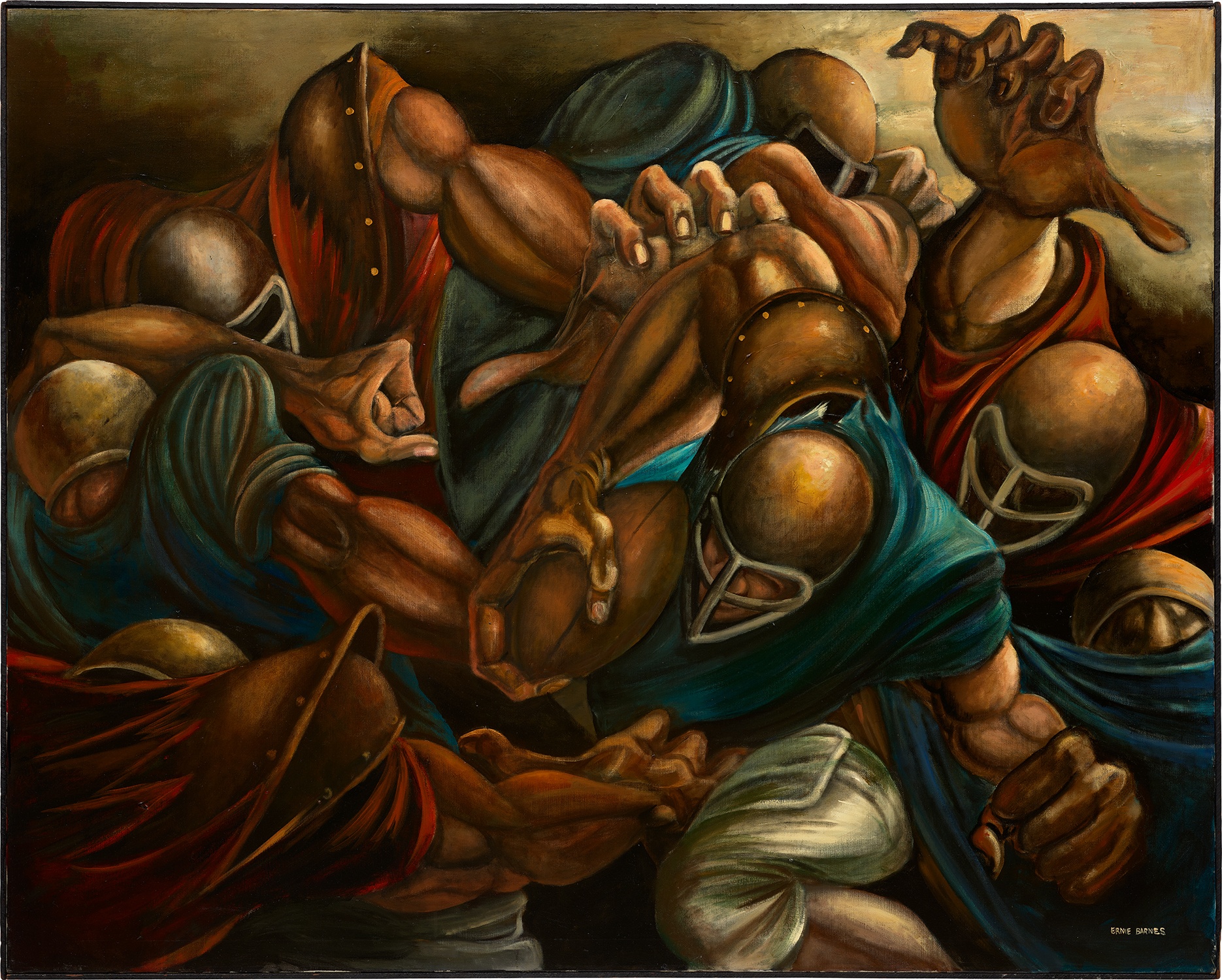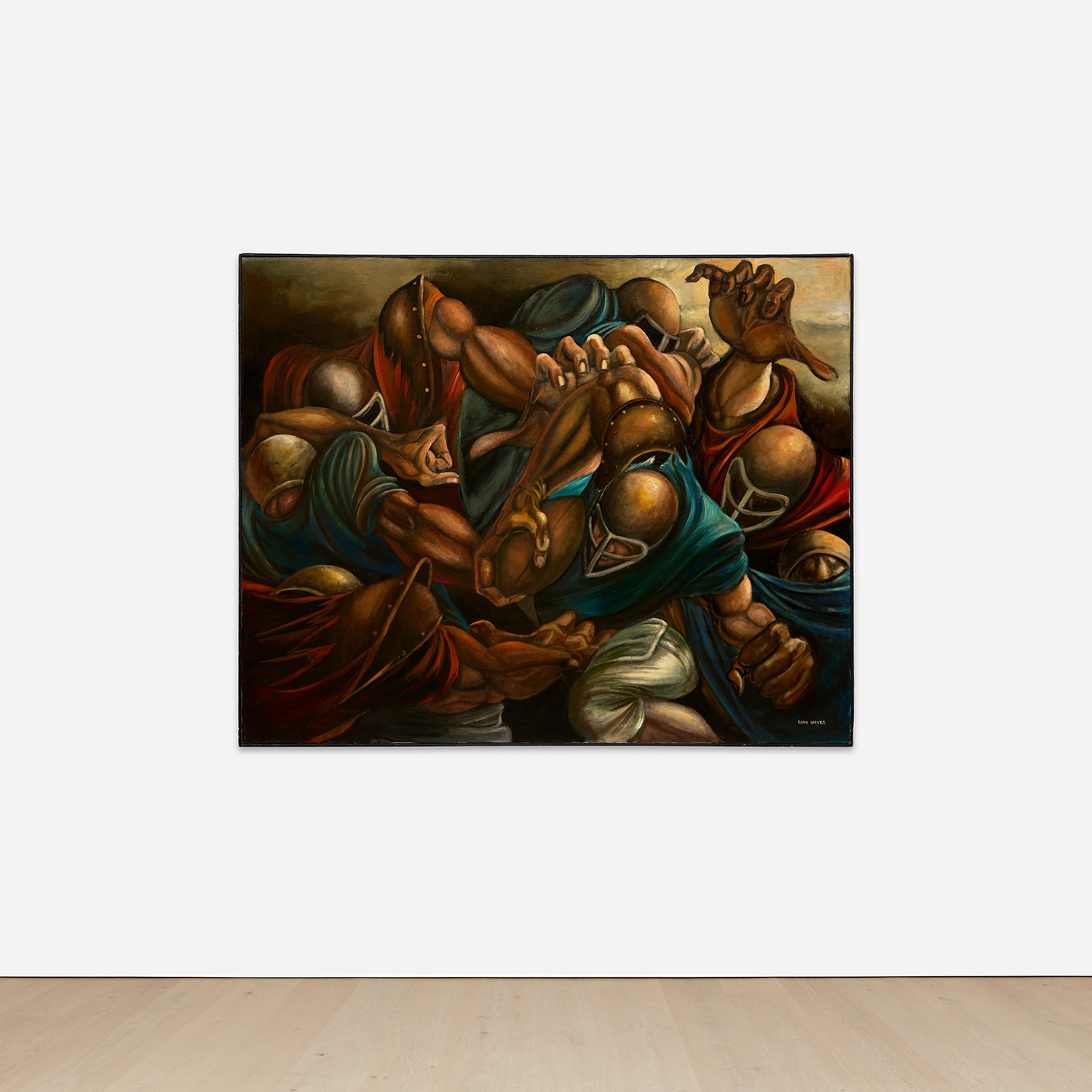



Property from a Prestigious Hamptons Collection
125
Ernie Barnes
The Vanishing Breed
signed "ERNIE BARNES" lower right
oil on canvas
48 x 60 in. (121.9 x 152.4 cm)
Painted in 1972.
The Vanishing Breed is included in the forthcoming Ernie Barnes Catalogue Raisonné. We thank Luz Rodriguez for her assistance in cataloguing this work.
The Vanishing Breed is included in the forthcoming Ernie Barnes Catalogue Raisonné. We thank Luz Rodriguez for her assistance in cataloguing this work.